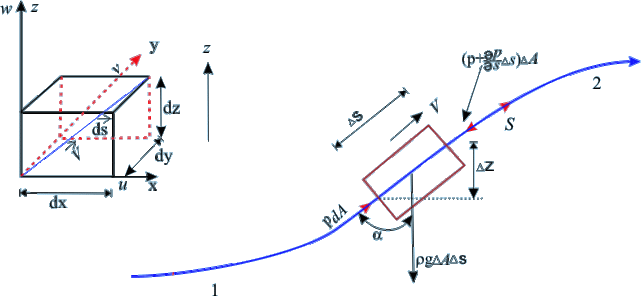Eulers equation
Euler's equation for motion
Leonhard Euler (1707-1783) was a pioneering Swiss mathematician and physicist.
Overview
The Euler's equation for steady flow of an ideal fluid along a streamline is a relation between the velocity, pressure and density of a moving fluid. It is based on the Newton's Second Law of Motion. The integration of the equation gives Bernoulli's equation in the form of energy per unit weight of the following fluid. It is based on the following assumptions:- The fluid is non-viscous (i,e., the frictional losses are zero).
- The fluid is homogeneous and incompressible (i.e., mass density of the fluid is constant).
- The flow is continuous, steady and along the streamline.
- The velocity of the flow is uniform over the section.
- No energy or force (except gravity and pressure forces) is involved in the flow.
Derivation Of Equation
Let us consider a steady flow of an ideal fluid along a streamline and small element AB of the flowing fluid as shown in figure.
- dA = Cross-sectional area of the fluid element
- ds = Length of the fluid element
- dW = Weight of the fluid element
- P = Pressure on the element at A
- P+dP = Pressure on the element at B
- v = velocity of the fluid element
 Login
Login

